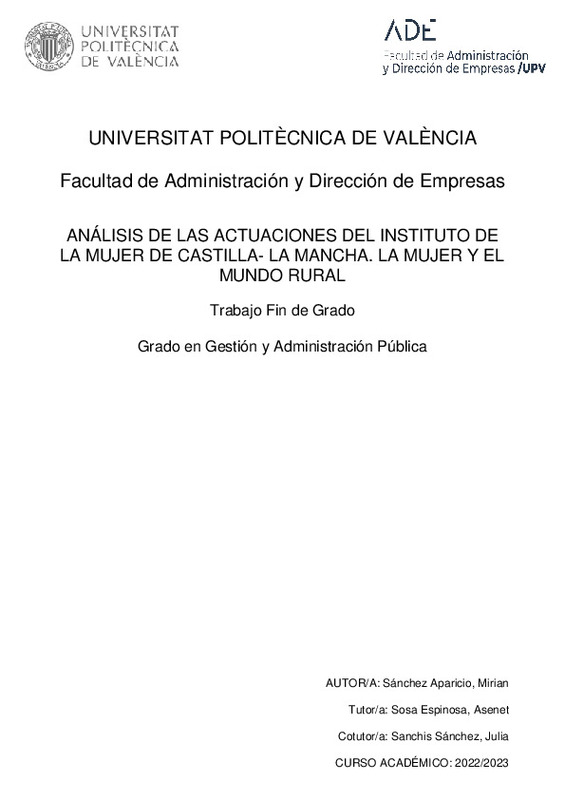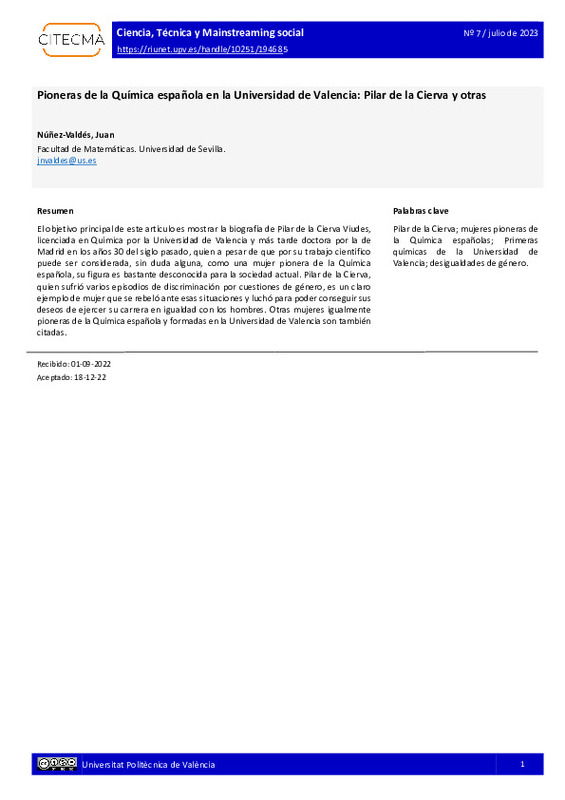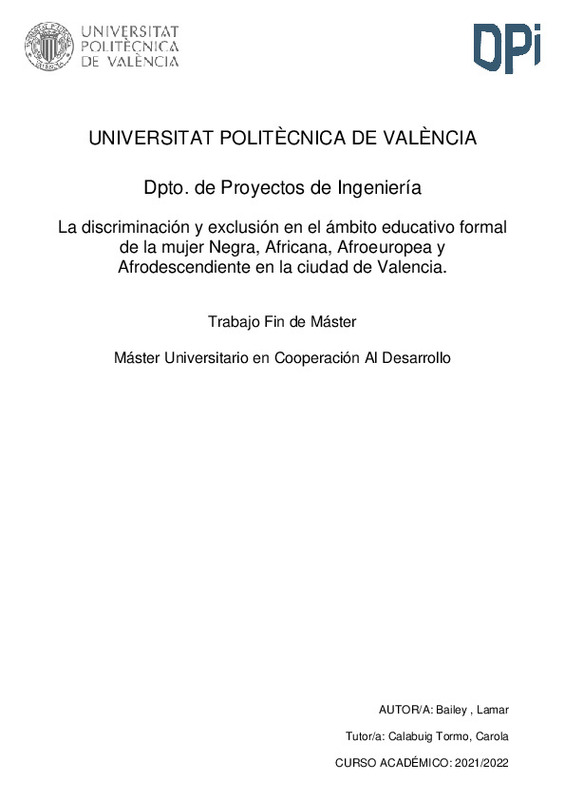|
Resumen:
|
[ES] Castilla-La Mancha es, según la Ley 2/2021 de 7 de mayo de Medidas Económicas, Sociales y Tributarias frente a la Despoblación y para el Desarrollo del Medio Rural en Castilla-La Mancha, una región con un perfil y ...[+]
[ES] Castilla-La Mancha es, según la Ley 2/2021 de 7 de mayo de Medidas Económicas, Sociales y Tributarias frente a la Despoblación y para el Desarrollo del Medio Rural en Castilla-La Mancha, una región con un perfil y caracterización eminentemente rural, en la que más del 90 % de su geografía es rural, y en la que más de la mitad de sus municipios tiene menos de 500 habitantes, y solo 12 sobrepasan los 30.000 habitantes. Como recoge la Ley 6/2019, de 25 de noviembre, del Estatuto de las Mujeres Rurales de Castilla-La Mancha, La desigualdad de género está presente en todas las sociedades y constituye una de las principales barreras para la plena inclusión a nivel social, económico y político de las mujeres y especialmente en el ámbito rural, las situaciones de discriminación que viven las mujeres se agravan. Entre las prioridades del Estatuto de las Mujeres Rurales de Castilla-La Mancha están, según la exposición de motivos de la Ley, la mejora de las oportunidades de vida para las mujeres, en tanto que agentes clave para la vertebración y la cohesión social del medio rural y la visibilización del trabajo que realizan las mujeres en la actividad agraria, promoviendo su reconocimiento profesional y el acceso a los derechos derivados de la titularidad de las explotaciones agrarias. Así, las actuaciones sobre la promoción de la igualdad de oportunidades entre mujeres y hombres y específicamente en territorios y comunidades autónomas eminentemente rurales, son clave para reducir las brechas de género. Es por ello que en el presente Trabajo Final de Grado (TFG), tiene como objetivo general: estudiar actuaciones del Instituto de la Mujer de Castilla-La Mancha dirigidas a promover la igualdad entre mujeres y hombres, con especial atención a la mujer y el mundo rural. Este trabajo, además, contempla una serie de objetivos específicos, como son: 1. Describir la situación en la que se encuentran las mujeres en el medio rural español; 2. Recoger la dimensión y delimitación del medio rural castellano-manchego y la situación socio-demográfica con especial atención a la mujer. 3. Recoger la normativa relevante, en relación a la promoción de la igualdad de oportunidades entre mujeres y hombres, y a la visibilización del trabajo de la mujer rural de Castilla-La Mancha. 4. Relacionar el Plan Estratégico de Subvenciones del Instituto de la Mujer 2021-2023, con la normativa y documentos estratégicos identificados. Metodológicamente, este trabajo es un estudio documentalista, es decir, basado en la explotación de fuentes secundarias: estudios científicos publicados en relación con el caso que nos ocupa, fuentes estadísticas, normativa relevante y documentos oficiales. Tras la explotación de la información, la obtención de resultados es ordenada a través de un análisis DAFO. A partir de dichos resultados se realizarán propuestas relativas a las actuaciones y subvenciones del Instituto de la Mujer de castellano-manchego
[-]
[EN] Castilla-La Mancha is, according to Law 2/2021 of 7 May on Economic, Social and Tax Measures against Depopulation and for the Development of the Rural Environment in Castilla-La Mancha, "a region with an eminently ...[+]
[EN] Castilla-La Mancha is, according to Law 2/2021 of 7 May on Economic, Social and Tax Measures against Depopulation and for the Development of the Rural Environment in Castilla-La Mancha, "a region with an eminently rural profile and characterisation, in which more than 90 % of its geography is rural, and in which more than half of its municipalities have less than 500 inhabitants, and only 12 have more than 30,000 inhabitants".
As stated in Law 6/2019, of 25 November, of the Statute of Rural Women of Castilla-La Mancha, "Gender inequality is present in all societies and constitutes one of the main barriers to the full social, economic and political inclusion of women" and especially "in rural areas, the situations of discrimination experienced by women are aggravated".
Among the priorities of the Statute of Rural Women of Castilla-La Mancha are, according to the Law's explanatory memorandum, the improvement of life opportunities for women, as key agents for the structuring and social cohesion of the rural environment and the visibility of the work carried out by women in agricultural activity, promoting their professional recognition and access to the rights derived from the ownership of agricultural holdings.
Thus, actions on the promotion of equal opportunities between women and men, and specifically in predominantly rural territories and autonomous communities, are key to reducing gender gaps.
For this reason, the general objective of this Final Degree Project (TFG) is to study the actions of the Women's Institute of Castilla-La Mancha aimed at promoting equality between women and men, with special attention to women and the rural world. This work also contemplates a series of specific objectives, such as:
1. to describe the situation of women in the Spanish rural environment;
2. to describe the dimension and delimitation of the rural environment of Castile-La Mancha and the socio-demographic situation, with special attention to women.
3. To collect the relevant regulations, in relation to the promotion of equal opportunities between women and men and to the visibility of the work of rural women in Castilla-La Mancha.
4. Relate the Strategic Plan of Subsidies of the Women's Institute 2021-2023, with the regulations and strategic documents identified.
Methodologically, this work is a documentalist study. That is to say, it is based on the exploitation of secondary sources: scientific studies published in relation to the case in question, statistical sources, relevant regulations and official documents.
After the exploitation of the information, the results are organised by means of a SWOT analysis. Based on these results, proposals will be made regarding the actions and subsidies of the Women's Institute of Castilla-La Mancha.
[-]
|










